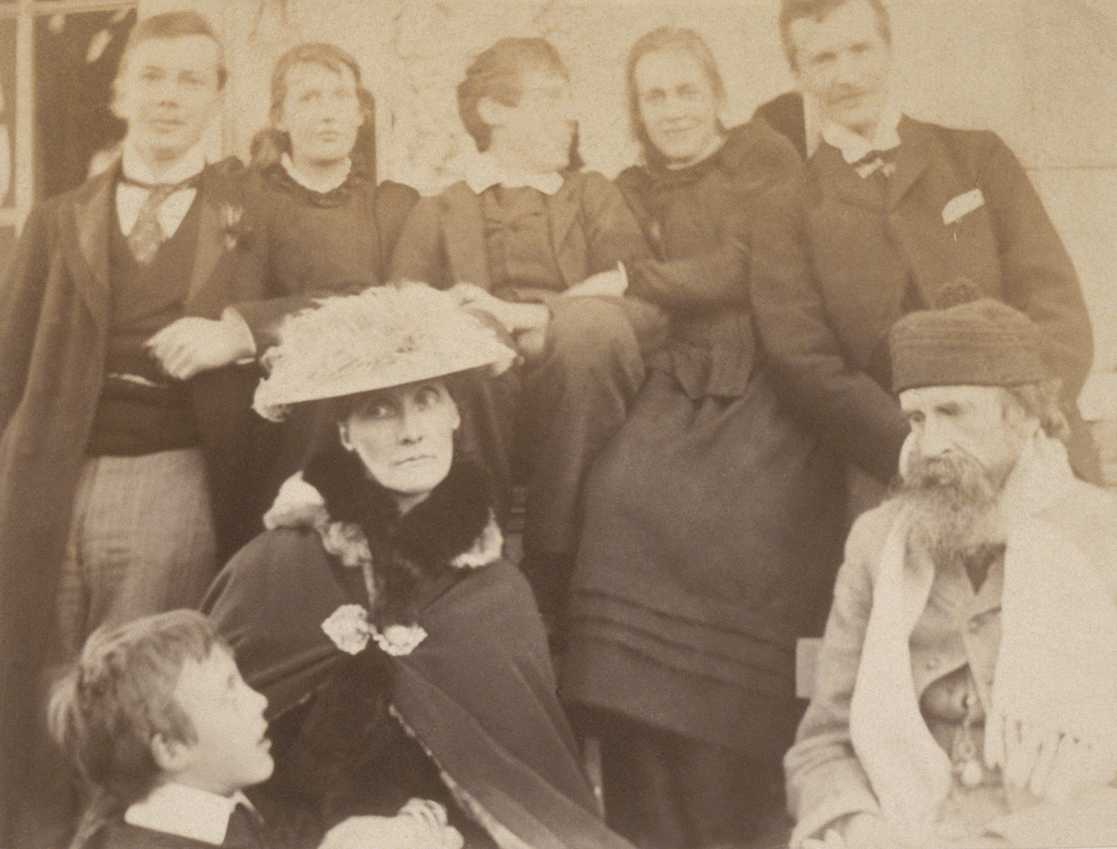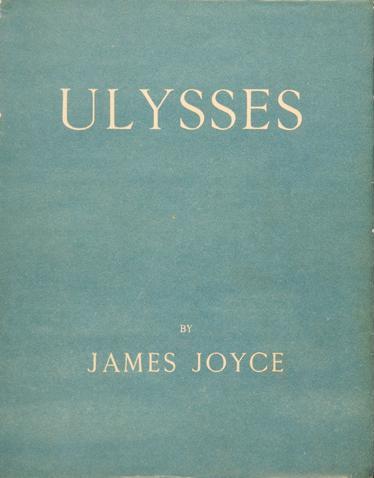|
Pilgrimage (novel Sequence)
''Pilgrimage'' is a novel sequence by the British author Dorothy Richardson, from the first half of the 20th century. It comprises 13 volumes, including a final posthumous volume. It is now considered a significant work of literary modernism. Richardson's own term for the volumes was "chapters". Overview Miriam Henderson, the central character in the ''Pilgrimage'' novel sequence, is based on the author's own life between 1891 and 1915. ''Pilgrimage'' was read as a work of fiction and "its critics did not suspect that its content was a reshaping of DMR's own experience", nor that it was a ''roman à clef''. Miriam, like Richardson, "is the third of four daughters hoseparents had longed for a boy and had treated her as if she fulfilled that expectation". This upbringing is reflected in Miriam's "strong ambivalence toward her role as a woman". Dorothy Richardson had the same ambivalence. Content The first novel '' Pointed Roofs'' (1915), is set in 1893. At 17 years old Miriam ... [...More Info...] [...Related Items...] OR: [Wikipedia] [Google] [Baidu] |
Novel Sequence
A book series is a sequence of books having certain characteristics in common that are formally identified together as a group. Book series can be organized in different ways, such as written by the same author, or marketed as a group by their publisher. Publishers' reprint series Reprint series of public domain fiction (and sometimes nonfiction) books appeared as early as the 18th century, with the series ''The Poets of Great Britain Complete from Chaucer to Churchill'' (founded by British publisher John Bell in 1777). In 1841 the German Tauchnitz publishing firm launched the ''Collection of British and American Authors'', a reprint series of inexpensive paperbound editions of both public domain and copyrighted fiction and nonfiction works. This book series was unique for paying living authors of the works published even though copyright protection did not exist between nations in the 19th century. Later British reprint series were to include the ''Routledge's Railway Library' ... [...More Info...] [...Related Items...] OR: [Wikipedia] [Google] [Baidu] |
Herbert Spencer
Herbert Spencer (27 April 1820 – 8 December 1903) was an English polymath active as a philosopher, psychologist, biologist, sociologist, and anthropologist. Spencer originated the expression "survival of the fittest", which he coined in ''Principles of Biology'' (1864) after reading Charles Darwin's 1859 book ''On the Origin of Species''. The term strongly suggests natural selection, yet Spencer saw evolution as extending into realms of sociology and ethics, so he also supported Lamarckism. Riggenbach, Jeff (24 April 2011The Real William Graham Sumner, Mises Institute. Spencer developed an all-embracing conception of evolutionism, evolution as the progressive development of the physical world, biological organisms, the human mind, and human culture and societies. As a polymath, he contributed to a wide range of subjects, including ethics, religion, anthropology, economics, political theory, philosophy, literature, astronomy, biology, sociology, and psychology. During h ... [...More Info...] [...Related Items...] OR: [Wikipedia] [Google] [Baidu] |
Book Series Introduced In 1915
A book is a structured presentation of recorded information, primarily verbal and graphical, through a medium. Originally physical, electronic books and audiobooks are now existent. Physical books are objects that contain printed material, mostly of writing and images. Modern books are typically composed of many pages bound together and protected by a cover, what is known as the '' codex'' format; older formats include the scroll and the tablet. As a conceptual object, a ''book'' often refers to a written work of substantial length by one or more authors, which may also be distributed digitally as an electronic book ( ebook). These kinds of works can be broadly classified into fiction (containing invented content, often narratives) and non-fiction (containing content intended as factual truth). But a physical book may not contain a written work: for example, it may contain ''only'' drawings, engravings, photographs, sheet music, puzzles, or removable content like ... [...More Info...] [...Related Items...] OR: [Wikipedia] [Google] [Baidu] |
Virginia Woolf
Adeline Virginia Woolf (; ; 25 January 1882 28 March 1941) was an English writer and one of the most influential 20th-century modernist authors. She helped to pioneer the use of stream of consciousness narration as a literary device. Virginia Woolf was born in South Kensington, London, into an affluent and intellectual family as the seventh child of Julia Prinsep Jackson and Leslie Stephen. She grew up in a blended household of eight children, including her sister, the painter Vanessa Bell. Educated at home in English classics and Victorian literature, Woolf later attended King’s College London, where she studied classics and history and encountered early advocates for women’s rights and education. After the death of her father in 1904, Woolf and her family moved to the bohemian Bloomsbury district, where she became a founding member of the influential Bloomsbury Group. She married Leonard Woolf in 1912, and together they established the Hogarth Press in 1917 ... [...More Info...] [...Related Items...] OR: [Wikipedia] [Google] [Baidu] |
Henry James
Henry James ( – ) was an American-British author. He is regarded as a key transitional figure between literary realism and literary modernism, and is considered by many to be among the greatest novelists in the English language. He was the son of Henry James Sr. and the brother of Philosophy, philosopher and psychologist William James and diarist Alice James. He is best known for his novels dealing with the social and marital interplay between ''émigré ''Americans, the English, and continental Europeans, such as ''The Portrait of a Lady''. His later works, such as ''The Ambassadors'', ''The Wings of the Dove'' and ''The Golden Bowl'' were increasingly experimental. In describing the internal states of mind and social dynamics of his characters, James often wrote in a style in which ambiguous or contradictory motives and impressions were overlaid or juxtaposed in the discussion of a character's psyche. For their unique ambiguity, as well as for other aspects of their compos ... [...More Info...] [...Related Items...] OR: [Wikipedia] [Google] [Baidu] |
Stream Of Consciousness (narrative Mode)
In literary criticism, stream of consciousness is a narrative mode or method that attempts "to depict the multitudinous thoughts and feelings which pass through the mind" of a narrator. It is usually in the form of an interior monologue which is disjointed or has irregular punctuation. The term was first used in 1855 and was first applied to a literary technique in 1918. While critics have pointed to various literary precursors, it was not until the 20th century that this technique was fully developed by modernist writers such as Marcel Proust, James Joyce, Dorothy Richardson and Virginia Woolf. Stream of consciousness narratives continue to be used in modern prose and the term has been adopted to describe similar techniques in other art forms such as poetry, songwriting and film. Origin of term Alexander Bain used the term in 1855 in the first edition of ''The Senses and the Intellect'', when he wrote, "The concurrence of Sensations in one common stream of consciousnes ... [...More Info...] [...Related Items...] OR: [Wikipedia] [Google] [Baidu] |
Free Indirect Speech
Free indirect speech is the literary technique of writing a character's first-person thoughts in the voice of the third-person narrator. It is a style using aspects of third-person narration conjoined with the essence of first-person direct speech. The technique is also referred to as free indirect discourse, free indirect style, or, in French, ''discours indirect libre''. Free indirect speech has been described as a "technique of presenting a character's voice partly mediated by the voice of the author", with their voices effectively merged. Or, reversing the emphasis: "... the character speaks through the voice of the narrator", with their voices effectively merged. It has also been described as "''the illusion'' by which third-person narrative comes to express ... the intimate subjectivity of fictional characters." The ''distinguisher'' term "free" in the phrase indicates the technique whereby the authorinstead of being fixed with the narrator or with just one charactermay "r ... [...More Info...] [...Related Items...] OR: [Wikipedia] [Google] [Baidu] |
May Sinclair
May Sinclair was the pseudonym of Mary Amelia St. Clair (24 August 1863 – 14 November 1946), a popular British writer who wrote about two dozen novels, short stories and poetry. She was an active suffragist, and member of the Woman Writers' Suffrage League. She once dressed up as a demure, rebel Jane Austen for a suffrage fundraising event. Sinclair was also a significant critic in the area of modernist poetry and modernist literature, prose, and she is attributed with first using the term stream of consciousness (narrative mode), 'stream of consciousness' in a literary context, when reviewing the first volumes of Dorothy Richardson's novel sequence ''Pilgrimage (novel sequence), Pilgrimage'' (1915–1967), in ''The Egoist'', April 1918. Early life Sinclair was born in Rock Ferry, Cheshire. Her mother, Amelia Sinclair, was strict and religious; her father, William Sinclair, was a Liverpool shipowner, who went bankrupt when Sinclair was seven years old and became an alcoholic. ... [...More Info...] [...Related Items...] OR: [Wikipedia] [Google] [Baidu] |
St John's Wood, London
St John's Wood is a district in the London Boroughs of Camden and the City of Westminster, London, England, about 2.5 miles (4 km) northwest of Charing Cross. Historically the northern part of the ancient parish and Metropolitan Borough of Marylebone, it extends from Regent's Park and Primrose Hill in the east to Edgware Road in the west, with the Swiss Cottage area of Hampstead to the north and Lisson Grove to the south. The area includes Lord's Cricket Ground, home of Marylebone Cricket Club and Middlesex CCC and a regular international test cricket venue. It also includes Abbey Road Studios, well known through its association with the Beatles. Origin The area was once part of the Forest of Middlesex, an area with extensive woodland, though it was not the predominant land use. The area's name originates, in the Manor of Lileston, one of the two manors (the other the Manor of Tyburn) served by the Parish of Marylebone. The Manor was taken from the Knights Templar o ... [...More Info...] [...Related Items...] OR: [Wikipedia] [Google] [Baidu] |
Swiss Alps
The Alps, Alpine region of Switzerland, conventionally referred to as the Swiss Alps, represents a major natural feature of the country and is, along with the Swiss Plateau and the Swiss portion of the Jura Mountains, one of its three main Physical geography, physiographic regions. The Swiss Alps extend over both the Western Alps and the Eastern Alps, encompassing an area sometimes called Central Alps. While the northern ranges from the Bernese Alps to the Appenzell Alps are entirely in Switzerland, the southern ranges from the Mont Blanc massif to the Bernina Range, Bernina massif are shared with other countries such as France, Italy, Austria and Liechtenstein. The Swiss Alps comprise almost all the highest mountains of the Alps, such as Dufourspitze (4,634 m), the Dom (mountain), Dom (4,545 m), the Liskamm (4,527 m), the Weisshorn (4,506 m) and the Matterhorn (4,478 m). The other following major summits can be found in this list of mountains of Switzerland. Since the Middle Age ... [...More Info...] [...Related Items...] OR: [Wikipedia] [Google] [Baidu] |
Bernese Oberland
The Bernese Oberland (; ; ), sometimes also known as the Bernese Highlands, is the highest and southernmost part of the canton of Bern. It is one of the canton's five administrative regions (in which context it is referred to as ''Oberland'' without further specification). It constitutes the Alps, Alpine region of the canton and the northern side of the Bernese Alps, including many of its highest peaks, among which the Finsteraarhorn (), the highest in both range and canton. The region essentially coincides with the upper basin of the Aare, the latter notably including Lake Thun and Lake Brienz, the two large lakes of the region. On the banks of the lakes or the Aare are the main settlements of Thun, Spiez, Interlaken, Brienz and Meiringen. The numerous side valleys of the Bernese Oberland include a large number of Alpine villages, many of them being tourist resorts and connected by mountain railways to Spiez and Interlaken. The Lötschberg, a major north-south axis through the Alp ... [...More Info...] [...Related Items...] OR: [Wikipedia] [Google] [Baidu] |
Catherine Wells
Catherine Wells (née Amy Catherine Robbins; 8 July 1872 – 6 October 1927) was an English writer and poet. She was a former student of H. G. Wells, to whom she was married from 1895 until her death. Life Amy Catherine Robbins was born in Islington, London, on 8 July 1872, the daughter of Frederick and Maria Catherine Robbins. She was described as "fragile figure, with very delicate features, very fair hair, and very brown eyes". Following the death of her father, she undertook degree study in order to become a teacher. She was a student of H. G. Wells at the Tutorial College in Holborn, and they married on 27 October 1895. They lived initially in Camden Town and Sevenoaks, and later at Woking and Worcester Park in Surrey. Their household in Worcester Park was portrayed by Dorothy Richardson in ''Pilgrimage'' (1915). Richardson had been a schoolfriend of Catherine Wells. The couple were known to their friends as H. G. and Jane. In 1900, they moved to Spade House, a home bui ... [...More Info...] [...Related Items...] OR: [Wikipedia] [Google] [Baidu] |








